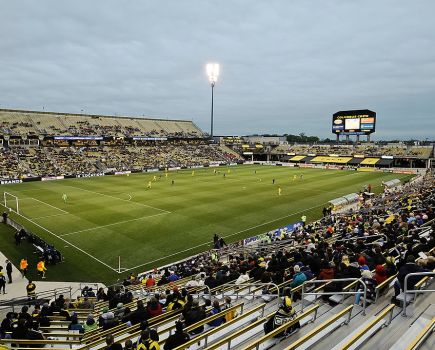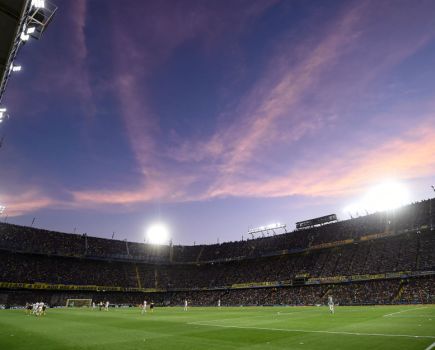Porto is one of 150 soccer cities featured in Libero, the digital travel guide for football fans. Regularly refreshed with new destinations and the travelogue Soccer Sagas, Libero is a one-click treasure trove of football trip tips, tales and trivia. See www.liberoguide.com/porto.
Estadio do Dragao, Porto v Benfica, Primeira Liga. Sun Sept 20/2015 Port/UK time
Porto is the powerhouse of the Portuguese north, panoramically set at the mouth of the river Douro, its famous port wine lodges and hilly, atmospheric old quarter linked by vast, spectacular bridges.
Flagship club FC Porto recently dominated the domestic game, but have since fallen away, allowing Benfica to win the last two league titles. Based at the impressively modernised Estadio do Dragao, built to host Euro 2004, FC Porto picked up 14 domestic titles in just over two decades.

Founded in 1893, FC Porto were an inaugural member of the first Portuguese league 40 years later. By then, the club had moved from their first ground at Campo da Rainha to Campo da Constituicao, on the main road of the same name.
Today a training centre for local young players, Campo da Constituicao and its main stand witnessed the winning of three league titles in the 1930s before the Dragons moved further north-east to the impressive new Estádio das Antas on the eve of the European era in 1952.
Porto remained firmly in the shadow of giants Benfica and Sporting Lisbon until former player Jorge Pedroto took over as coach in the late 1970s. With former bank clerk Jorge Nuno Pinto da Costa as chairman and Fernando Gomes scoring almost a goal a game, Porto won two titles and the groundwork was laid for three decades of unprecedented success.
Capacity reached 95,000 during the European-Cup winning of campaign of 1986-87, only to be reduced by nearly half when the das Antas became all-seated a decade later.

The next great change came in 2004, when Portugal hosted the Euros. In the domestic game, Porto’s class of 2004 was their last really great side, with players such as Deco, Ricardo Carvalho and Paulo Ferreira later poached by Mourinho for Chelsea.
Beside the demolished das Antas, the Estadio do Dragao was created to host Euro 2004. The stadium’s inaugural match had come in November 2003 was notable for being the first-team debut of Lionel Messi for Porto’s losing opponents, Barcelona. It then hosted the curtain-raiser for Euro 2004, a surprise victory for Greece over hosts Portugal, and one semi-final.

Housing 52,000 fans in all-seated comfort, the Dragon Stadium is typical of the purpose-built stadium of today, with sponsored stands, an adjoining shopping mall and an upscale hotel alongside.

A recent addition has been an excellent club museum, complemented by a tasteful café, FC Porto history decorating the walls.

The real boon is a metro station with a direct connection to Porto Airport, one stop from Campanhã train station and three from the city centre.
Home fans occupy the Super Bock Bancada Sul nearest the metro station and the right side of the Coca-Cola Bancada Norte, the left corner reserved for visitors through gate 21 where there’s also a left luggage. The tmn Bancada Nascente and meo Bancada Poente stands along the sidelines contain the VIP boxes.
On the ground
Four metro lines call at Estádio do Dragão: light blue line A, red line B, violet line E and orange line F, all following the same route through the city centre. E runs all the way to the airport (€1.85). Several buses also serve the stadium, Nos. 401 and 806 stopping opposite gates 19-24.

The main ticket office (bilheteira) is at street level close to the metro station, by gates 12-18. Tickets may also be purchased from the club website and picked up from ticket office No.9 at the stadium.
The most expensive seats are in the tmn Bancada Nascente and meo Bancada Poente stands, the cheapest behind the goals in the Super Bock Bancada Sul and Coca-Cola Bancada Norte, partly occupied by visiting supporters.
The Loja Azul (daily 10am-7pm) is by the museum as you walk up from the metro station. Along with a range of nifty coffee cups and the Porto-emblazoned espresso-maker for €65, you might be tempted by the club’s own wine and, naturally, port. It might be a while before they shift a one of the silver-plated scale models of the stadium, priced at €1,000.
The excellent FC Porto Museum (Mon 2.30pm-7pm, Tue-Sun 10am-7pm, €12, €8 4-16s) presents 120 years of history in a contemporary setting, with impressive visual displays and regularly changing temporary exhibitions.

Guided tours can be taken of the museum (90min) at 10.30am and 2.30pm or of the stadium (45min) at 11am, noon, 3pm and 4pm.
Next door, the Museu Cafe (daily 8am-8pm, until kick-off on match days) is a tastefully themed café-restaurant attached to the equally new club museum. Its terrace clearly visible as you climb from the metro station to the stadium, the museum cafe displays the history of FC Porto – note the photo of a passionate Bobby Robson – on the walls and embedded into the seating dividers. There’s standard bar food, too.
As in the old das Antas days, fans still gather at unpretentious bars along Avenida de Fernao Magalhaes such as the Confeitaria Satelite (No.1556), adjoining O Braseiro das Antas, and nearby Cafe Estadio. These are a fair stroll from today’s stadium that now lies down an equally new boulevard east of Magalhaes.







